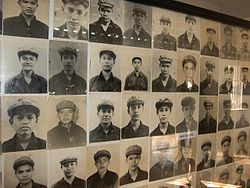
| Part of a series on |
| Child soldiers |
|---|
| Main articles |
| Issues |
| Instances |
| Legal aspects |
| Movement to end the use of child soldiers |
Child soldiers were used by the Khmer Rouge and other armed groups during the Cambodian Civil War, Cambodian genocide, and insurgent armed conflict into the late 1990s. [1] [2]